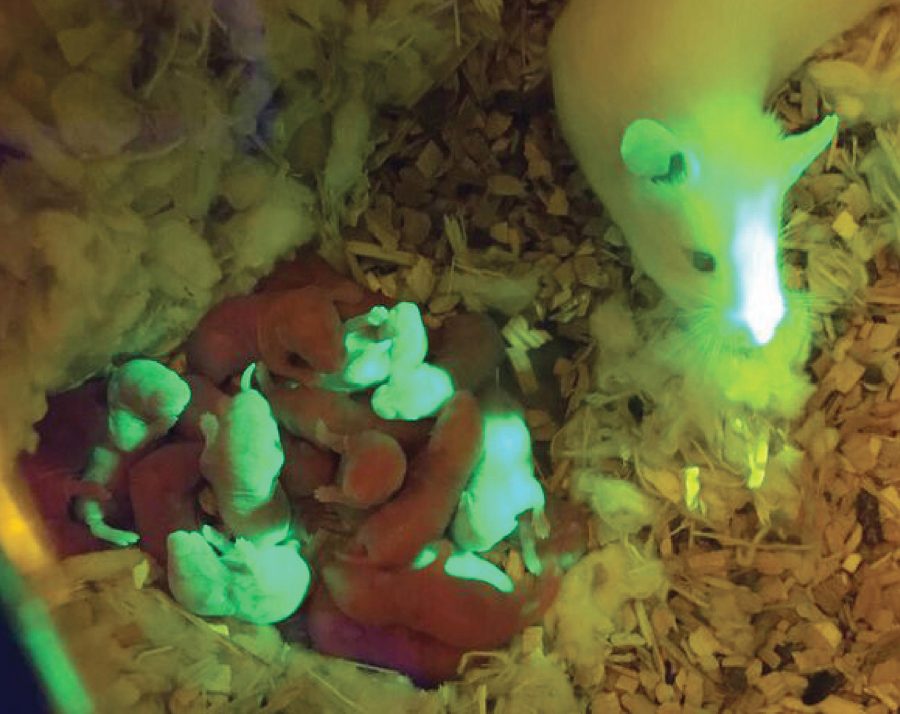Researchers at Northwestern University have successfully tested 3D-printed mouse ovaries capable of producing healthy and functional eggs.
The procedure represents the first stages to 3D-printing organs to treat infertility. Teresa Woodruff, who led the research, claims that the study is the “holy grail of bioengineering for regenerative medicine.” Infertility is a common outcome for survivors of ovarian cancer. If the condition appears in early ages, it may even prevent the patient from experiencing puberty.

3D-printed ovaries are a new alternative for women who have lost their ovaries
As of today, there are treatments to restore the ovaries, but these are regarded as short-term solutions that do not offer much to patients that have had metastatic cancer among other severe diseases.
The idea was to develop a complete replacement that allows for hormones to be generated naturally, as well as allowing the patient to get pregnant in the future. Previous studies have shown that it is possible to create an engineered ovary from biomaterials, although no concise results have been achieved until now.

The problem is that the cells that comprise ovaries work when built as a type of structure known as follicles, which in this case harbor inside a female reproductive cell or egg. They are also surrounded by cells that produce hormones depending on what the pituitary gland dictates for the rest of the body.
For the ovary, the shape of the follicle is of high importance, mainly because all of the surrounding structures should act in unison, meaning that they are supposed to keep in contact with the egg until it is ready. The challenge in the study was to 3D-print an artificial environment where this process can occur naturally.
It is not the first time researchers manage to obtain live births from mice through artificial methods, although the methods have been temporary. This has been achieved mainly by shielding the follicles with a special gel based on water. The problem is that the gel puts limitations on the size of the follicles, reducing its effectiveness below a practical level.
3D-printed organs are almost here
A potential solution appeared in the form of 3D printing. The technique allowed the team to “tortuously” join 3D-printed porous hydrogel scaffolds to create a bioprosthetic ovary. Apparently, 3D printing would allow control over the implant’s inner structures.
Using gelatin instead of ink, researchers 3D-printed ovaries. They tested three different configurations for the follicle architecture and determined which would be the most efficient, inserting them in adult mice whose ovaries had been removed.

The ovaries started to work in less than a week after being implanted, even without being activated by external factors. The ovaries were vascularized naturally, meaning that they were receiving oxygen from the bloodstream as they’re supposed to, which is vital for their correct functioning.
Blood vessels started to form 3 weeks after implantation, distributing in a way similar to how they would structure themselves in organic ovaries. Eventually, the follicles started producing hormones, and then the ovary was able to produce an egg eight weeks after surgery.
The next step was to evaluate the fertility of mice. They first sterilized the subjects, using two mice for control and seven with bioprosthetic ovaries. The mice were mated with other mice who have fertilized other females.
Three of the mice with bioprosthetic ovaries gave birth to one to two baby mice. Furthermore, the mothers with the implants could lactate usually.
The baby mice eventually grew and reproduced with other mice, giving birth to their own litters.
“The techniques developed here are the necessary first steps to validate the significant undertaking of exploring such an approach for creating a human bioprosthetic ovary. Importantly, we accomplish on-platform ovulation through a biomaterial that did not require mechanical manipulation or digestion of the material to release an egg,” wrote the team.
Additionally, the implant did not attempt against the live births, without having to stimulate the mice in any way, neither through hormones nor by transferring their embryos to a different environment.
The ovulation was deemed as entirely reliant on the follicles produced by the 3D printer, showing that the artificial ovary was the primary factor in the reproduction of the test mice.
Thousands of new possibilities with 3D-printed organs
According to the research team, 3D printing bioprosthetic materials is immensely useful, mainly because the same structure can be scaled down or up, depending on the needs of the bioengineer. It is also possible to create different degrees of rigidness and separation, all subjected to the objective at hand.
Human trials are yet to take place, as researchers have to test long-term implications of the procedure. But if the method proves to be successful, 3D printing may be the solution to restore hormone and fertility to women who had their ovaries removed and plenty of other similar cases.
Furthermore, the possibility of 3D printing organs opens up a new world of possibilities, reducing the need to wait for transplants. Instead, the patient could just wait for a couple of hours until their new organ comes out of a printer.
Source: Nature
